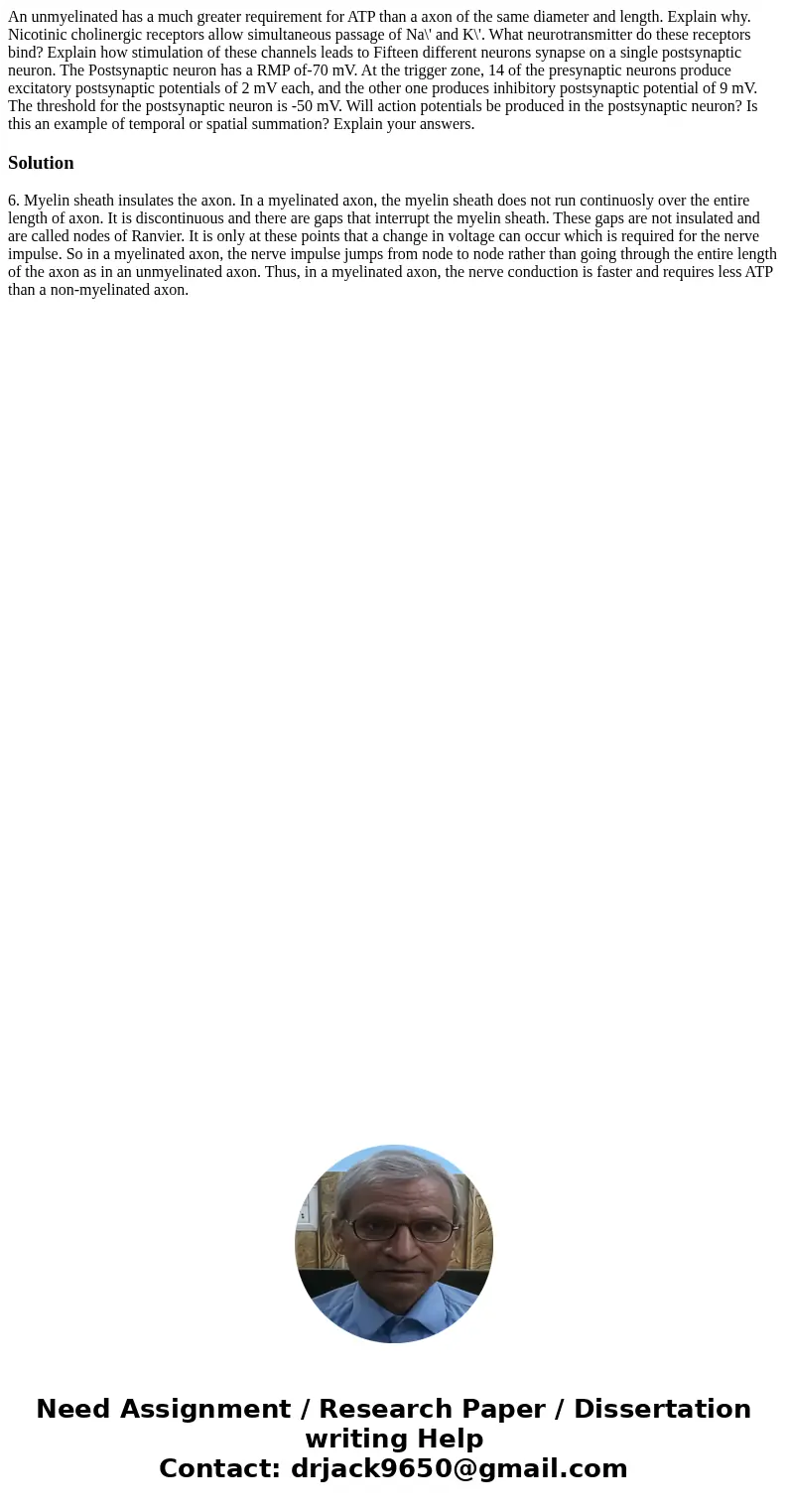An unmyelinated has a much greater requirement for ATP than
An unmyelinated has a much greater requirement for ATP than a axon of the same diameter and length. Explain why. Nicotinic cholinergic receptors allow simultaneous passage of Na\' and K\'. What neurotransmitter do these receptors bind? Explain how stimulation of these channels leads to Fifteen different neurons synapse on a single postsynaptic neuron. The Postsynaptic neuron has a RMP of-70 mV. At the trigger zone, 14 of the presynaptic neurons produce excitatory postsynaptic potentials of 2 mV each, and the other one produces inhibitory postsynaptic potential of 9 mV. The threshold for the postsynaptic neuron is -50 mV. Will action potentials be produced in the postsynaptic neuron? Is this an example of temporal or spatial summation? Explain your answers. 
Solution
6. Myelin sheath insulates the axon. In a myelinated axon, the myelin sheath does not run continuosly over the entire length of axon. It is discontinuous and there are gaps that interrupt the myelin sheath. These gaps are not insulated and are called nodes of Ranvier. It is only at these points that a change in voltage can occur which is required for the nerve impulse. So in a myelinated axon, the nerve impulse jumps from node to node rather than going through the entire length of the axon as in an unmyelinated axon. Thus, in a myelinated axon, the nerve conduction is faster and requires less ATP than a non-myelinated axon.

 Homework Sourse
Homework Sourse